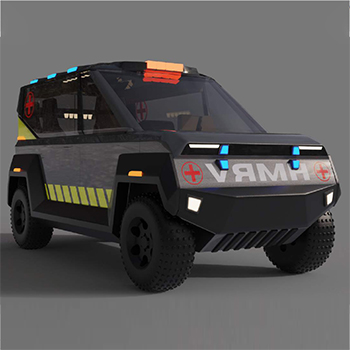Over 53 million people reside in the high-altitude Himalayan regions of North India, which are a fascinating and awe-inspiring part of the country's diverse landscape. Nestled amidst the mighty Himalayas, these regions boast breathtaking beauty, rich cultural heritage, and an environment that is both challenging and rewarding. However, it is important to note that these areas also face unique challenges such as limited transportation and limited access to resources. The relief map of India (Image 1.1) shows the high-altitude areas of Northern India. For the sake of this project, areas over 2500 m altitude were considered for research. Due to the rugged terrain and extreme weather conditions, transportation infrastructure in these high-altitude regions is often limited and challenging. Many remote villages and towns are only accessible by treacherous mountain roads or even by foot. This lack of transportation can make it difficult for residents and visitors to travel, resulting in limited connectivity and logistical challenges. One of the significant challenges is the lack of adequate medical and rescue services, further compounded by the difficulty in accessing them. The remote and rugged terrain makes it challenging for emergency medical services to reach remote villages and trekking routes promptly. The scarcity of healthcare facilities, trained medical personnel, and emergency response infrastructure poses a risk to both local communities and adventurous travelers. In cases of accidents or medical emergencies, the limited availability of rescue services and the time required to transport patients to lower altitudes for proper medical attention can significantly impact the chances of survival and successful treatment. This situation underscores the importance of thorough preparation, caution, and ensuring the availability of proper medical supplies when venturing into these high-altitude regions.

